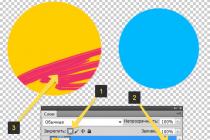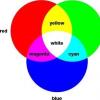Information about the make, model, and alternative names of a particular device, if any.
Design
Information about the dimensions and weight of the device, presented in different units of measurement. Used materials, suggested colors, certificates.
| Width Width information refers to the horizontal side of the device in its standard orientation during use. No silent mode in the cameraThe solution for this is a dedicated video application that will certainly support a wide range of codecs. There is support for slow motion, but this is not new. The only downside is that no alternative app can provide lasting impact and some features. Photos taken on the day have a very large amount of detail and good dynamic range. When choosing the highest quality panorama, prepare your patience, because it takes a little more time. The video is very good, but since the camera interface is very limited, we recommend that you install an alternative application to create video clips. | 77.8 mm (millimeters) 7.78 cm (centimeters) 0.26 ft 3.06in |
| Height Height information refers to the vertical side of the device in its standard orientation during use. | 159.3 mm (millimeters) 15.93 cm (centimeters) 0.52 ft 6.27in |
| Thickness Information about the thickness of the device in different units measurements. | 7.3 mm (millimeters) 0.73 cm (centimeters) 0.02 ft 0.29in |
| Weight Information about the weight of the device in different units of measurement. Also, it's very large and a bit bulky to use, but those who like big phones won't have this problem. Equipment - great phone, counting program to get the first update. The high quality of workmanship and a lot of design work is noticeable, although this is not very noticeable in the photographs. IN real life, in photos, especially renderers, it looks very ugly, but when you get your hands on it, it looks fantastic and gives you a superior feel. Underestimation of performance under heavy loadsThe camera is great, but optical stabilization she'll be even better. You may not like the price, but the quality is worth it. There are many high-end devices with similar prices. There are a few curves here and there, but the lines are mostly clean. It is close to fine detail in edges and edges. Otherwise, the curved corners and slightly bulging backs feel comfortable in the hand. At the bottom, the top and side edges are plastic strips, under which the antennas are hidden. Big, good, with an excellent camera and an average battery. | 178 g (grams) 0.39 lbs 6.28oz |
| Volume Approximate volume of the device, calculated from dimensions provided by the manufacturer. Refers to devices with the shape of a rectangular parallelepiped. | 90.47 cm³ (cubic centimeters) 5.49 in³ (cubic inches) |
| Colors Information about the colors in which this device is offered for sale. They are not the same technological qualities, which are close to the fine details in the edge edges and curved edges. The connector is reversible which makes it much easier to use. It is no longer necessary to think about which way to turn the male part of the cable. But if you forget the cable at home, you'll have a hard time finding someone to provide it for you. Hardware platform: processor, memory, performanceWith this solution, it was designed to protect the camera lens, which would otherwise be out of the surface and prone to scratches. Inside the pockets, the protrusion is barely noticeable. Below is the microphone and fingerprint scanner inserted into the device. | The black White Silver |
| Housing materials The materials used to make the body of the device. | Aluminium alloy |
SIM card
The SIM card is used in mobile devices to store data that certifies the authenticity of mobile service subscribers.
Mobile networks
A mobile network is a radio system that allows multiple mobile devices to communicate with each other.
| GSM GSM (Global System for Mobile Communications) is designed to replace the analogue mobile network (1G). For this reason, GSM is often referred to as a 2G mobile network. It is enhanced by the addition of GPRS (General Packet Radio Services) and later EDGE (Enhanced Data rates for GSM Evolution) technologies. The front of the device is flat and even. The reason is probably that the audio system does not have any additional technologies to improve the sound quality. The volume of sound in the handset again coincides with the average value. and voices don't necessarily sound warm. Melodies and other warnings have always captured my attention as well as vibrations. You need to turn it on manually: Settings - Sound and notifications - Light pulse signal. The clarity of the displayed text and images is excellent. For some, this technology is the most complete, others less so. | GSM 850 MHz GSM 900 MHz GSM 1800 MHz GSM 1900 MHz |
| CDMA CDMA (Code-Division Multiple Access) is a channel access method used in communications in mobile networks. Compared with other 2G and 2.5G standards like GSM and TDMA, it provides more high speeds data transfer and the ability to connect more consumers at the same time. | CDMA 800 MHz CDMA 1900 MHz |
| UMTS UMTS is short for Universal Mobile Telecommunications System. It is based on the GSM standard and belongs to 3G mobile networks. Developed by 3GPP and its biggest advantage is to provide more speed and spectral efficiency with W-CDMA technology. Technical specification and performanceBut it reads well in direct sunlight for contrast. I don't like the brightness setting on automatic settings in steps. Accuracy and response to touch are up to the task. Not bad, but not as good as, for example, in the model of the same year. The device was known to warm up all over the back, but there was no performance degradation. It was within 5-6 seconds and it was exactly about 10 meters. In a nutshell, sometimes my energy capacity was sufficient for the whole day, sometimes at a critical level in the late evening hours. | UMTS 800 MHz UMTS 850 MHz UMTS 900 MHz UMTS 1700/2100 MHz UMTS 1900 MHz UMTS 2100 MHz |
| LTE LTE (Long Term Evolution) is defined as fourth generation (4G) technology. It is developed by 3GPP based on GSM/EDGE and UMTS/HSPA to increase the capacity and speed of wireless mobile networks. The subsequent development of technologies is called LTE Advanced. | LTE 700 MHz Class 13 LTE 700 MHz Class 17 LTE 800 MHz LTE 850 MHz LTE 900 MHz LTE 1700/2100 MHz LTE 1800 MHz LTE 1900 MHz LTE 2100 MHz LTE 2600 MHz LTE-TDD 1900 MHz (B39) LTE-TDD 2300 MHz (B40) LTE-TDD 2500 MHz (B41) LTE-TDD 2600 MHz (B38) LTE 700 MHz (B29) LTE 1900 MHz (B25) LTE 800 MHz (B20) LTE 850 MHz (B26) LTE 700 MHz (B12) AWS-1(B4) LTE-FDD 1800 MHz (B9) |
Mobile technologies and data rates
Communication between devices in mobile networks is carried out through technologies that provide different data transfer rates.
Operating system
The operating system is the system software that manages and coordinates the operation of the hardware components in the device.
SoC (System on a Chip)
System on a chip (SoC) includes all the most important hardware components of a mobile device in one chip.
| SoC (System on a Chip) A system on a chip (SoC) integrates various hardware components such as a processor, graphics processor, memory, peripherals, interfaces, etc., as well as the software necessary for their operation. The new operating system also has a dose feature that extends battery life while sleeping or idle workstation. High priority applications work neatly. Depending on your usage habit and daily activities, you can save at least 10% energy. The first 20 minutes of charging is pretty fast, and a full charge takes 1 to 1.5 hours. Although visual changes compared to old version not too noticeable to users, but the real changes are deeply integrated into the system. It supports multiple accounts, and the transition effects and various little animations are quite dynamic. They can be configured to show their content or not. Screen " Quick Settings” is also available on the lock screen. As always, you can edit your home screens, add widgets, and more. | Qualcomm Snapdragon 810 MSM8994 v2.1 |
| Technological process Information about the technological process by which the chip is made. The value in nanometers measures half the distance between the elements in the processor. | 20 nm (nanometers) |
| Processor (CPU) The main function of the processor (CPU) mobile device is the interpretation and execution of instructions contained in software applications. The scrolling of the application tray is vertical and there are always different offers that change at the bottom depending on the use of our application. Indexed alphabetically for faster retrieval. This feature gains much more control because it is no longer required to provide all the information that the application requires to install and run. You will be pleased with your self-portraits as well as your fans and teams when you post them on social network. Focusing is very fast, even at night it starts quickly on subjects. The camera interface is simple, but all the necessary settings and four shooting modes are at your fingertips. | 4x 2.0 GHz ARM Cortex-A57, 4x 1.5 GHz ARM Cortex-A53 |
| Processor bit depth The bit depth (bits) of a processor is determined by the size (in bits) of registers, address buses, and data buses. 64-bit processors have higher performance than 32-bit processors, which, in turn, are more productive than 16-bit processors. | 64 bit |
| Instruction Set Architecture Instructions are commands by which the software sets/controls the operation of the processor. Information about the instruction set (ISA) that the processor can execute. Shift in quick succession is triggered by one long press of the shutter. Most daytime photos have a good degree of sharpness and accurate exposure. There are very few problems with white balance, but it can be fixed. Sasha: With a screen rear camera- the most pleasant surprise for me. Izgeld, materials, controls, productionSmartphone Charger Cable for connection with percolator Documentation for the scanner. | ARMv8-A |
| Level 0 Cache (L0) Some processors have an L0 (level 0) cache that is faster to access than L1, L2, L3, etc. The advantage of having such a memory is not only higher performance, but also reduced power consumption. | 4 kB + 4 kB (kilobytes) |
| First level cache (L1) Cache memory is used by the processor to reduce access time to more frequently accessed data and instructions. L1 (level 1) cache is small and much faster than both system memory and other cache levels. If the processor does not find the requested data in L1, it continues to look for them in the L2 cache. With some processors, this search is performed simultaneously in L1 and L2. Information about the type of speakers and audio technologies supported by the device
| 16 kB + 16 kB (kilobytes) |
| Second level cache (L2) L2 (level 2) cache is slower than L1, but in return it has a larger capacity, allowing more data to be cached. It, like L1, is much faster than system memory (RAM). If the processor does not find the requested data in L2, it continues to look for it in the L3 cache (if available) or RAM.
| 2048 KB (kilobytes) 2 MB (megabytes) |
| Number of processor cores The processor core executes program instructions. There are processors with one, two or more cores. Having more cores increases performance by allowing multiple instructions to be executed in parallel. | 8 |
| Processor clock speed The clock speed of a processor describes its speed in terms of cycles per second. It is measured in megahertz (MHz) or gigahertz (GHz). | 2000 MHz (megahertz) |
| Graphics Processing Unit (GPU) Graphics Processing Unit (GPU) handles calculations for various 2D/3D graphic applications. In mobile devices, it is used most often by games, consumer interface, video applications, etc. | Qualcomm Adreno 430 |
| Clock frequency GPU The speed of work is clock frequency GPU, which is measured in megahertz (MHz) or gigahertz (GHz). | 650 MHz (megahertz) |
| The amount of random access memory (RAM) Random access memory (RAM) is used by the operating system and all installed applications. Data stored in RAM is lost when the device is turned off or restarted. | 3 GB (gigabytes) |
| Type of random access memory (RAM) Information about the type of random access memory (RAM) used by the device. | LPDDR4 |
| Number of RAM channels Information about the number of RAM channels that are integrated into the SoC. More channels means higher data rates. | dual channel |
| RAM frequency The frequency of RAM determines its speed, more specifically, the speed of reading / writing data. | 1600 MHz (megahertz) |
Built-in memory
Each mobile device has a built-in (non-removable) memory with a fixed amount.
Screen
The screen of a mobile device is characterized by its technology, resolution, pixel density, diagonal length, color depth, etc.
| Type/technology One of the main characteristics of the screen is the technology by which it is made and on which the image quality of information directly depends. | AMOLED |
| Diagonal For mobile devices, the screen size is expressed in terms of its diagonal length, measured in inches. | 5.7in 144.78 mm (millimeters) 14.48 cm (centimeters) |
| Width Approximate Screen Width | 2.79in 70.98 mm (millimeters) 7.1 cm (centimeters) |
| Height Approximate Screen Height | 4.97in 126.19 mm (millimeters) 12.62 cm (centimeters) |
| Aspect Ratio The ratio of the dimensions of the long side of the screen to its short side | 1.778:1 16:9 |
| Permission Screen resolution indicates the number of pixels vertically and horizontally on the screen. More a high resolution means sharper image detail. | 1440 x 2560 pixels |
| Pixel Density Information about the number of pixels per centimeter or inch of the screen. Higher density allows information to be shown on the screen in clearer detail. | 515 ppi (pixels per inch) 202 ppcm (pixels per centimeter) |
| Color depth Screen color depth reflects the total number of bits used for the color components in a single pixel. Information about the maximum number of colors the screen can display. | 24 bit 16777216 flowers |
| Screen area Approximate percentage of screen space on the front of the device. | 72.5% (percentage) |
| Other characteristics Information about other functions and features of the screen. | capacitive Multitouch Scratch resistance |
| Corning Gorilla Glass 4 Oleophobic (lipophobic) coating |
Sensors
Different sensors perform different quantitative measurements and convert physical indicators into signals that are recognized by the mobile device.
Main camera
The main camera of a mobile device is usually located on the back of the case and is used for taking photos and videos.
| Sensor Model Information about the manufacturer and model of the photo sensor used in the device's camera. | Sony IMX377 Exmor R |
| Sensor type Digital cameras use photo sensors to take pictures. The sensor, as well as the optics, is one of the main factors in the quality of a camera in a mobile device. | CMOS BSI (backside illumination) |
| Sensor size Information about the size of the photosensor used in the device. Typically, cameras with a larger sensor and lower pixel density offer more high quality images despite the lower resolution. | 6.25 x 4.65 mm (millimeters) 0.31in |
| Pixel size The smaller pixel size of the photosensor allows more pixels to be used per unit area, thus increasing resolution. On the other hand, a smaller pixel size can have a negative impact on image quality when high levels light sensitivity (ISO). | 1.55 µm (micrometers) 0.00155 mm (millimeters) |
| crop factor The crop factor is the ratio between the size of a full-frame sensor (36 x 24mm, equivalent to a frame of standard 35mm film) and the size of the device's photosensor. The number shown is the ratio of the diagonals of the full frame sensor (43.3 mm) and the photo sensor of the specific device. | 5.55 |
| Diaphragm | f/2.0 |
| Flash type The most common types of flashes in mobile devices cameras are LED and xenon flashes. LED flashes give a softer light and, unlike brighter xenon flashes, are also used for video shooting. | Double LED |
| Image resolution One of the main characteristics of mobile device cameras is their resolution, which indicates the number of pixels in the horizontal and vertical direction of an image. | 4032 x 3024 pixels 12.19 MP (megapixels) |
| Video resolution Information about the maximum supported resolution for video recording by the device. | 3840 x 2160 pixels 8.29 MP (megapixels) |
Information about the maximum number of frames per second (fps) supported by the device when shooting video at the maximum resolution. Some of the main standard shooting and video playback speeds are 24p, 25p, 30p, 60p. | 30 fps (frames per second) |
| Characteristics Information about other software and hardware features related to the main camera and improving its functionality. | autofocus Burst shooting digital zoom Digital Image Stabilization geo tags panoramic shooting HDR shooting Touch focus Face recognition Adjusting the white balance ISO setting Exposure compensation Self-timer Scene Selection Mode Macro mode |
| Laser-assisted autofocus CRI-90 Dual LED 6-element lens 720p@240fps |
Additional camera
Additional cameras are usually mounted above the screen of the device and are mainly used for video calls, gesture recognition, etc.
| Diaphragm Aperture (f-number) is the size of the aperture opening that controls the amount of light reaching the photosensor. A lower f-number means the aperture is larger. | f/2.4 |
| Image resolution Information about the maximum resolution of the secondary camera when shooting. In most cases, the resolution of the secondary camera is lower than that of the main camera. | 3264 x 2448 pixels 7.99 MP (megapixels) |
| Video resolution Information about the maximum supported video resolution additional camera. | 1280 x 720 pixels 0.92 MP (megapixels) |
| Video - frame rate/frames per second. Information about the maximum number of frames per second (fps) supported by the optional camera when shooting video at the maximum resolution. | 30 fps (frames per second) |
Audio
Information about the type of speakers and audio technologies supported by the device.
Radio
The mobile device radio is a built-in FM receiver.
Location determination
Information about navigation and location technologies supported by the device.
WiFi
Wi-Fi is a technology that provides wireless communication for short distance data transmission between different devices.
Bluetooth
Bluetooth is a standard for secure wireless data transfer between different types of devices over short distances.
USB
USB (Universal Serial Bus) is an industry standard that allows different electronic devices to communicate.
Headphone jack
This is an audio connector, which is also called an audio jack. The most widely used standard in mobile devices is the 3.5mm headphone jack.
Connecting devices
Information about other important connection technologies supported by the device.
Browser
A web browser is a software application for accessing and viewing information on the Internet.
| Browser Information about some of the key features and standards supported by the device's browser. | HTML HTML5 CSS 3 |
Audio file formats/codecs
Mobile devices support various audio file formats and codecs that store and encode/decode digital audio data, respectively.
Video file formats/codecs
Mobile devices support various video file formats and codecs, which store and encode/decode digital video data, respectively.
Battery
Mobile device batteries differ from each other in their capacity and technology. They provide the electrical charge they need to function.
| Capacity The capacity of a battery indicates the maximum charge it can store, measured in milliamp-hours. | 3450 mAh (milliamp-hours) |
| Type The type of battery is determined by its structure and, more specifically, by the chemicals used. Exist different types batteries, with lithium-ion and lithium-ion polymer batteries most commonly used in mobile devices. | Li-polymer (Li-polymer) |
| Adapter output power Information about the strength of the electric current (measured in amperes) and the electric voltage (measured in volts) that the Charger (output power). Higher power output ensures faster battery charging. | 9 V (volts) / 3 A (amps) |
| Characteristics Information about some additional features of the device's battery. | fast charging Fixed |
Specific Absorption Rate (SAR)
SAR levels refer to the amount of electromagnetic radiation absorbed by the human body while using a mobile device.
| SAR level for the head (USA) The SAR level indicates maximum amount electromagnetic radiation, which the human body is exposed to when holding a mobile device near the ear. The maximum value used in the US is 1.6 W/kg per gram of human tissue. Mobile devices in the US are controlled by the CTIA and the FCC conducts tests and sets their SAR values. | 1.49 W/kg (watt per kilogram) |
| Body SAR (US) The SAR level indicates the maximum amount of electromagnetic radiation that the human body is exposed to when holding a mobile device at hip level. The highest acceptable SAR value in the US is 1.6 W/kg per gram of human tissue. This value is set by the FCC, and the CTIA controls whether mobile devices comply with this standard. | 0.81 W/kg (watt per kilogram) |
Despite the fact that the name of the new smartphone Huawei Nexus 6P there is the name of a well-known Japanese company, it is positioned as the flagship device from Google. Since its inception, the novelty has received a lot of flattering reviews. Some experts have dubbed it as best smartphone working on operating system Android.
For making a body Nexus 6P a solid piece of anodized aluminum was used, and Huawei placed a plastic insert in its lower part. Apparently, the device with a thickness of 7.3 millimeters leaves a double impression. Its ergonomics are thought out quite well, but due to its large size, comparable to the Iphone 6S Plus, you will have to get used to it at first. As for the above insert, it serves, rather, not as a decoration, but to amplify the signal.
Huawei Nexus 6P has a bright 5.7-inch screen. The pixel density per inch is 518. Gorilla Glass was used for its finish, which causes the screen to glare in bright sunlight.
Compared to the same Iphone 6S Plus Huawei Nexus 6P wins in the location of the fingerprint sensor: the manufacturer placed it next to the camera. The latter, in turn, is distinguished by a 12.3-megapixel matrix manufactured by Sony. The pictures taken by the device are clear and natural. Video recording is carried out with a frequency of 720p. Compared to its closest competitors from Apple and Samsung Galaxy Note5 , Huawei Nexus 6R still, it loses a little in terms of camera quality, especially since it is not equipped with automatic stabilization.
For its flagship, Google has prepared the following "stuffing":
1. Qualcomm processor Snapdragon 810 for 8 cores with a frequency of 2 GHz;
2. RAM 3 GB;
3. built-in memory 32, 64 and 128 GB;
4.Android OS 6.
Thanks to this equipment Huawei Nexus 6P shows high performance. However, in a series of tests, its performance lagged behind the Samsung Galaxy Note II CDMA, Motorola X Pure and Iphone 6S Plus.
The battery capacity is 3450 mAh. This is surely enough for the whole day of active use of the device. But still Nexus 6P slightly inferior in this category samsung galaxy Note II. However, the device more than compensates for the “lack” by the fact that it charges quickly. The manufacturer installed a port in it USB Type-C, which allows you to fully restore the battery from 0% to 100% in less than 1 hour.
Android version 6.0 automatically copies app data to Google Drive and provides links related to specific application. In addition, the OS updates installed programs immediately after switching on the smartphone.






































